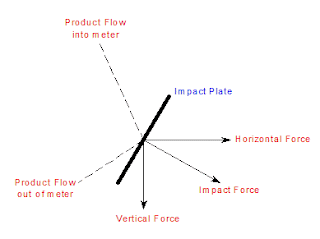Multivariable Pressure Transmitter or DP Transmitter?
Know Your Flow
Experts answering your Process Questions
The Question:
Should I use a Multivariable Pressure Transmitter or DP-only Transmitter for Air Flow Measurement?
The Expert:
James SeagravesThis is a question I receive all the time, as both types of transmitters measure the differential pressure (DP) of the air flow in a duct. To provide the best answer, let's first review the fundamentals of air flow measurement.
Basics of Air Flow Measurement
A Typical Pitot Tube in an Air Stream
 |
| Typical Pitot Tube in an air stream |
- High Port (Total Pressure): Measures the pressure from direct airflow impact.
- Low Port (Static Pressure): Measures the static pressure within the duct.
When a transmitter is connected across the High and Low ports, it measures the differential pressure. However, calculating flow from this measurement requires the application of the Bernoulli Principle or Bernoulli Equation.
Using the Bernoulli Principle
The Bernoulli Equation relates the square of the velocity of air flow in a duct to the ratio of the differential pressure (Δp) and the density of the air (ρ). In simplified form, it states:
Constants specific to the pitot tube design and measurement units are also incorporated into this formula:
The Role of Density
There are two ways to account for density in air flow calculations:
- Fixed Value Assumptions: Assume constant process temperature, static pressure, and barometric pressure.
- Live Measurement: Measure temperature, static pressure, and barometric pressure in real-time to compute density dynamically.
Comparing DP-Only and Multivariable Transmitters
A Multivariable (MV) Transmitter performs real-time measurements of temperature, static pressure, and barometric pressure, allowing it to compute density dynamically. This compensates for changes in process conditions, offering improved accuracy. However, the added sensors and computations make the MV transmitter more complex and more expensive.
On the other hand, a DP-Only Transmitter calculates flow based on fixed density assumptions. While simpler and more cost-effective, this approach may introduce errors when process conditions vary.
The Answer:
To decide between a Multivariable Transmitter and a DP-Only Transmitter, consider:
- Accuracy Requirements: How precise does your measurement need to be?
- Budget Constraints: Are you willing to invest in the added complexity and cost of an MV transmitter?
For example:
- A 10°F change in temperature causes approximately a 1% error in mass flow calculations if density is assumed constant.
- A 10 inWC change in static pressure introduces a similar 1% error under the same conditions.
If your application involves significant temperature or pressure fluctuations, an MV transmitter will provide the most accurate results by compensating for these changes. However, for stable conditions or less stringent accuracy requirements, a DP-only transmitter might suffice.
By carefully evaluating your process needs and weighing accuracy against cost, you can choose the best transmitter for your air flow measurement application.
For more information on the QVT DP Transmitter or QVT Multivariable Transmitter, click one of links or visit our website at easterninstruments.com, or call us at 910-392-2490, or email at sales@easterninstruments.com.




